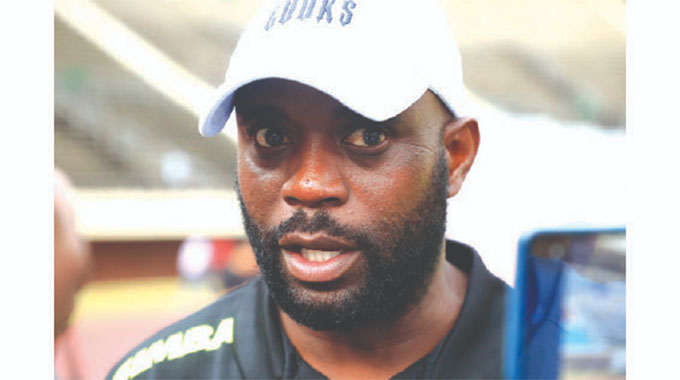So far so good at Takashinga Cricket Club


RARE BREED . . . Tatenda Taibu was one of the finest products to emerge from Takashinga Cricket club
Eddie Chikamhi Sports Reporter
“Before independence, cricket like many other elite sports, was a preserve for whites. Historically, the facilities were found exclusively in low-density areas where the minority white population lived. It was not imaginable that a black boy could also play the sport.”
The evolution of cricket in Zimbabwe is a result of years of struggle against institutionalised barriers.
In the years before and soon after independence, cricket had largely been accepted as an elite sport.
It was a sport for a certain group of people, highly discriminatory in nature especially against the black majority.
The sad narrative by former national team coach Steve Mangongo sums up a gloomy story of several black boys who could have made it to the top, but their careers were stifled by the lack of opportunities for exposure.
When the story of race relations in Zimbabwe sport is told, no matter how good one was, you had to be white to get due consideration into club cricket, more so with the national team.
Yet it was not imaginable to find cricket facilities in high-density suburbs and townships like Mufakose, Highfield, Mbare, Mpopoma, Magwegwe, Sakubva or Dangamvura where the black majority resided.
The establishment didn’t see the need to avail opportunities in these communities. There were always hushed voices but no one had the drive to do anything about the inequalities.
It was not until the early 1990s when Takashinga Cricket Club in Highfield was established, just over 10 years after independence.
Mangongo’s harrowing recount of the evolution of cricket paints a picture of years of struggle; the never-ending fight to break the steely racial barriers and create opportunities for all.
The firebrand former national team coach is a co-founder of Takashinga.
The institution is one success sports story in the post independent Zimbabwe. Today, many players have come through the institution and have made it to the top.
The name of the club aptly sums up their philosophy. Takashinga is a Shona word which stands for determination, bravery and unconquered willpower.
Mangongo and his partner Givemore Makoni dared to stand up for the majority of the underprivileged boys by coming up with the idea of establishing a cricket club that would benefit all.
“The name itself is the heart and soul of the ideology behind the establishment of this institution,” said Mangongo.
“We are determined; nothing will ever stop us from spreading the gospel of cricket. That is what we stand for and our dream is to see every talented kid getting the opportunity to play cricket no matter his background. We will not give up on that,” said Mangongo.
Takashinga has produced a host of franchise and national team players. Among the first fruits are the current national team captain Elton Chigumbura and two other former captains Tatenda Taibu and Prosper Utseya.
There are also some household names like Vusi Sibanda, Stuart Matsikenyeri, Hamilton Masakadza, Tafadzwa Kamungozi, Eric Chauluka, Forster Mutizwa, Trevor Garwe, Alester Maregwede, Timycen Maruma, Chamu Chibhabha who have passed through the system.
Besides Mangongo, who was recently coach of the national team, Takashinga has produced other coaches like the Zimbabwe A coach Shepherd Makunura and Dave Mutendera.
Some of the country’s top notch administrators like Admire Marodza, who is working wonders at MidWest Rhinos, is also a product of the system.
Takashinga headlines success in the integration of blacks into the sport.
The composition of the Zimbabwe team that took part at the recent ICC World Cup is big testimony to the giant strides the game has made in the last 35 years.
Mangongo was one of the first black boys to receive scholarship in the post-independent Zimbabwe to enable them to learn and at the same time pursuing cricket as a sport.
However, his desire was to see more numbers in the sport. His dream is still being fulfilled through Takashinga. The club in its formative days was referred to as Old Westonians because of their links to Churchill High School, but the name had to be changed to reflect their ideology. Interesting, they got a place in Highfield, the home of the liberation struggle.
And more intriguing is the fact that they are housed at the Zimbabwe Grounds, the venue of the historic mega-rally where President Mugabe addressed record crowds in his first rally soon after independence.
Takashinga showed the world that everything is possible when they hosted West Indies and Sri Lanka for their A team tours in 2003 and 2004.
“Takashinga was a brainchild of people who wanted cricket being played in the high density areas. The idea was born out of the desire to see people of colour playing the game as well.
“I believe it has served its purpose and I am happy we also have similar establishment in Bulawayo at Emakhandeni.
“We believe cricket should be played in the high density areas more because that’s where the majority of the people live. You need numbers in the game to create genuine competition,” said Mangongo.
He argues cricket, just like any other sport, should be accessible to everyone. Unlike football which every boy has played in the streets while growing up, cricket is a bit more expensive and needs proper equipment and facilities.
“Most of the facilities are found in areas where it’s hard for the youngsters to go. It’s always difficult for the parents to provide bus fares for the kids to visit the facilities and to finance their game.
“We have dozens of underprivileged kids who cannot afford to pay subscriptions at some of these city sports clubs.
“So it was important that facilities should be brought to the doorstep of the underprivileged boys.
“In fact, Takashinga has helped demonstrate to the world that it can be done, the majority can be involved.
“The demographics of the national team show that we are headed in the right direction.
“Otherwise it was difficult to break the perceptions.
“It was a myth because any child can play the sport given the support and the opportunities to train.
“The challenge now is for Zimbabwe Cricket to make sure that they polish the game in those areas.
“ZC need to provide more resources to the centres in the high density areas. Tendai Chatara, for example, our best fast bowler at the moment comes from the ghetto, in Mutare.
“Farai Nongerai was the quickest bowler we had during his time but he never reached his potential just because he came from Kambuzuma.
“When we experienced that debacle in 2004-05, when white players who composed the bulk of the national team walked away it spelt doom for Zimbabwe Cricket.
“But thanks to Takashinga who provided the majority of the players who stepped in to fill the void.
“Most of them were very young boys then, among them were school boys as well. Cricket was almost dead but they stood up for their country and today we still have cricket in Zimbabwe,” said Mangongo.
Takashinga are now taking the gospel of numbers in cricket beyond the borders.
Last year, they were invited to Uganda where they helped the hosts’ national team prepare for an international tournament.
Coaching clinics were also held with schoolchildren.
They have received more enquiries from as far afield as Sierra Leone, Kenya and Nigeria.










Comments